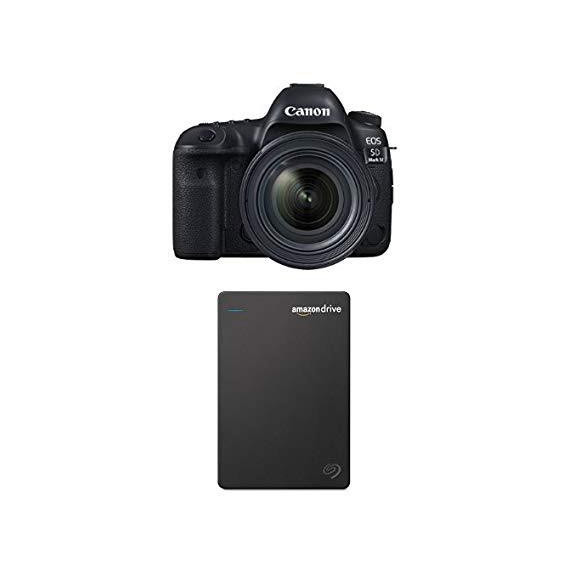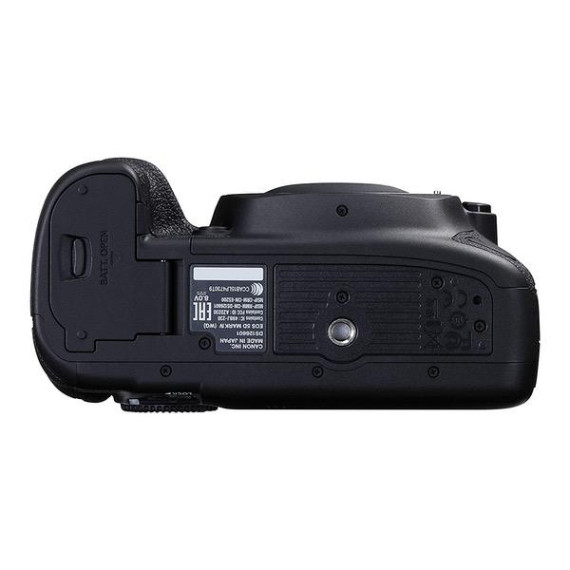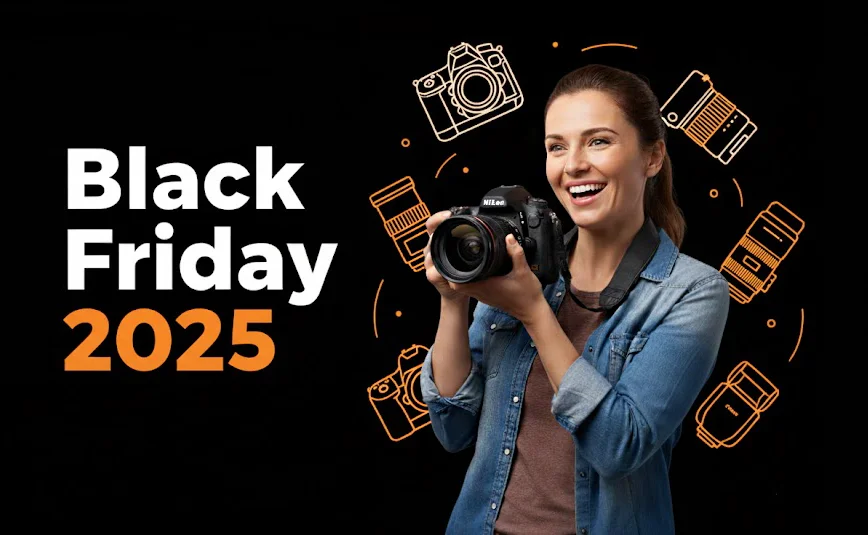Arun
I write this review from the perspective of an advanced photographer who does the occasional video. For three and a half years, I owned and loved the 5D Mark III. The upgrade to the IV was more a personal choice, rather than from being compelled by any major limitation of the III. Ive now grown familiar enough with it to write a review. A 5DIII user or a 7DII user will find the controls very familiar; I was able for the most part to start using it without referring to the manual and all that muscle memory Id built remained useful. As a practical matter, having the controls and even most of the customizations be similar between different Canon bodies is a great convenience if you happen to be using two different cameras during a shoot, particularly one where you dont control when the action happens. The shutter feels softer and quieter, a design carried over from the 5DS/R to reduce vibration. The viewfinder phase detect AF is everything you expect from a camera like this - I had no problems with my 24-70 II, 70-200 II, 135 or 85 1.8 at maximum apertures. After using this camera for seven months, I can say that tracking is improved over the III. The new metering sensor enables face detection and tracking through viewfinder AF. Combined with Zone AF and using a fast prime like the 135L or a zoom like the 70-200 II, it is excellent for candids and for tracking action. The 135L, in particular, is an absolute joy to use for candids. Light, fast, and precise, the effect is one of the camera virtually disappearing, leaving your eye and the unconscious reflex of your finger to capture one precious moment after another. Perhaps the biggest surprise is the touchscreen. I find myself using it more and more in preference to the joystick when navigating the menu. Dual Pixel Autofocus is as as fast as advertised - certainly as fast as viewfinder AF. What I found pleasantly surprising was that I seem to be able to get sharp shots at exposure times well over 1/focal length seconds using this method. You do have to get past the ergonomic considerations of shooting with a heavy camera held at arms length though, and it is probably better used with smaller lenses versus something like a 70-200. In terms of image quality - you will certainly notice the extra resolution. For the times you dont need it or are not able to use it effectively, the camera helpfully offers lower resolution RAW modes. I find the 17 MPix MRAW mode is very useful for run of the mill shooting needs giving something reasonably close to the resolution of a 6D or 5D III, generally preferring to use the full resolution mode only for landscape shots using a tripod or portraits in good lighting. The cameras JPG engine is clearly improved over the 5D III. The fine detail mode is a nice addition. I gave up on shooting JPG with the III due to the soft detail and very aggressive NR even at base ISO. On the IV, you can probably shoot JPG in a fairly broad range of conditions. The dynamic range - which was the main reason I upgraded - is certainly better than the III. The early fall morning shots I took with the camera clearly showed it capturing a greater range of tones than my old III. Shadows are much cleaner - at base ISO, the IV has less than half the read noise of the III. The complete absence of banding or pattern noise makes this an even bigger advantage, and this is easily seen and much appreciated when you work on RAW files. The camera does appear, for the most part, to be ISOless. What I mean by this is that once you know your aperture and shutter speed, you are better off shooting (in RAW) at low ISO and then boosting in post. Ive taken shots at ISO 400 and boosted by 3.2 stops in Lightroom (the equivalent of ISO 3675) and get very clean images. The benefit of this is that you preserve the greater dynamic range available at low ISO versus throwing away the highlights during in camera amplification. One application Ive found this useful for is when shooting in challenging and changing light conditions such as stage events. Ive taken to setting my aperture and shutter speed for DOF and movement and simply shooting at low ISO, with confidence that I will not overexpose highlights, and can easily recover a 3+ stop underamplification of darker regions in post with no noise penalty. This makes me less reliant on metering accuracy gives me more time to focus on composition and timing. I do find this to be a significant advantage versus the Mark III, and one I have come to appreciate very much as I have spent more time with the camera. At high ISOs, it is the upstream read noise of the sensor, as opposed to the noise from A/D conversion that dominates. Scaled for pixel size, the 5D IV has lower upstream read noise than the III. This lower upstream read noise of the 5D IV over the 5D Mark III does seem to translate into better high ISO performance. Overall, for the same viewing sizes, I find myself using less noise reduction at high ISO than I was used to before, and color and detail is well retained even at ISOs like 12,800. This performance suggests that the 5D Mark IV is a good camera for astrophotography, because a lower read noise should translate to better signal to noise ratio across the board, but especially importantly for the low photon flux from deep sky objects. After over a year of astrophotography, I can say that it is a remarkable camera for this purpose, with noise levels and detail captured noticeably superior to that of a 6D that I also tried for a time. The low conversion noise makes it possible to make use of the dynamic range available at low ISOs. I recently shot the Pleiades cluster using ISO 400 - two stops lower than what would be used on an older camera. This enabled me to capture the very faint inner nebulosity at the center of the cluster while not overexposing the main stars. I decided to update the section on video based on eight months of using this camera plus recent announcements by Canon. Much has been said about the 1.74x crop factor and large file sizes for 4K video, so I wont go over that here. What I will say is that I have been able to take better 1080p videos with far less effort using the 5D IV than my old 5D Mark III. Comparing videos taken in similar lighting conditions and the same lens, the IVs videos seem to show better color rendition and highlight detail. I certainly do not mean to suggest that the III is incapable of making excellent videos - there are plenty of great videos taken using that camera that are publicly available, and Magic Lantern firmware allows shooting of RAW 24 fps 1080p video, something currently unavailable on the IV - only that for a relative novice like me, it is a lot easier to do so on the IV. Ive found the autofocus and face tracking in movie mode to work very well; so long as you have a reasonable number of faces (4-5), it has no trouble locking on to a specific face, even from the side, and will easily reacquire focus after a temporary obstruction. What this means is that you can use your fast lenses, particularly those having IS, for grab and go shooting and come away with great videos; you will have no trouble using them wide open. One of the complaints I had when I initially wrote this review was the absence of C-LOG. As of July 2017, this will no longer be the case, since C-LOG will be available as a paid firmware update and is implemented for both 4K and 1080p video. This means that much more of the dynamic range of the sensor will be available for those who dont mind spending time grading and processing their videos. Yes, ideally the firmware update would have been free, but the cost does not seem exorbitant, and quite simply, I would far rather have it than not. Based on my actual experience with using the camera for video, and the recent announcement of C-LOG implementation, there simply is not a reason for me any more to dock a star here. Since I have spent so much time talking about IQ, I want to add an experience that speaks to a different attribute. Recently, I was shooting the Rosette nebula in -4 F weather. After two and a half hours, my phone had shut down from the cold, my remote timer was barely functioning, and I had no sensation in my toes. This camera though did not skip a beat. Functionally, it was as if I was shooting on a sunny spring day. The buttons, the responsiveness, and even the touchscreen behaved exactly as they would in much warmer weather. This toughness is an under rated aspect of a pro grade camera like this. It is built to take with you with confidence wherever you go. A final word about Canons customer service - recently I started seeing a minor sensor issue. This didnt affect normal photographs, but was noticeable in astrophotography which require stretching of shadows. Canon replaced the sensor - a year out of warranty - for nothing more than a $200 evaluation fee. Given the actual full cost of the sensor, I was very appreciative of the courtesy. I will admit to being initially underwhelmed by the 5D Mark IV, initially rating it 4 stars, but that impression has undergone a radical change as I have spent more time using it. The 5D Mark IIIs improvements over its predecessor in the form of autofocus were almost immediately evident upon use; the 5D IVs improvements in the form of tracking, high ISO capability, dynamic range, and video features take time with the camera to manifest themselves, but are no less real and no less meaningful; they make it easier to get better images in tougher conditions than is possible with the 5D Mark III. Quite simply, the more I have pushed this camera, the more it has delivered, and the more it impresses. Even features such as WiFi and the intervalometer, which were non factors in my decision to upgrade, have proven themselves very useful. And while we can debate whether this is an evolutionary or revolutionary upgrade, that debate does not take away from the fact that this is a great camera. Image notes: The Christmas photograph is a 3 stop push, a marked improvement in shadow recovery over the 5D Mark III. The street photograph was taken with a 35LII, and shows the level of detail that a sharp lens can deliver. The third image is a panorama of the Milky Way over the Yosemite valley, each individual image being an untracked 20 second exposure. The fourth image perhaps speaks most to the light gathering power and low read noise of the sensor. It is a photograph of the deep sky region of the Orion constellation showing the flame and horse head nebulae. It was taken with a 400mm f/5.6L, and represents a total of 40 minutes of exposure; however, each individual shot was only 15 seconds long due to tracking limitations. Stacking such short exposures to yield a meaningful image is only possible if the sensor has low read noise such that the low photon signal makes it past the read noise floor in each frame. The last image of the Pleiades was taken at ISO 400, an hours worth of 90s exposures. The increased dynamic range allows capture of the very faint center nebulosity without overexposing the main stars; I find it a remarkable camera in actual use. Additional information: A buy/no-buy decision is yours to make; my goal was to give you enough information based on my experience so you can make an informed decision if this is the right camera for you. Nothing Ive written changes the fact that the 5D III remains a very good camera, and an excellent value for your money especially if you are upgrading from crop frame or a 5D II and are on a budget. If you found this review helpful, please take a moment to indicate "Yes" so below. This assures a more representative rating for the camera and also encourages us to keep contributing.

























